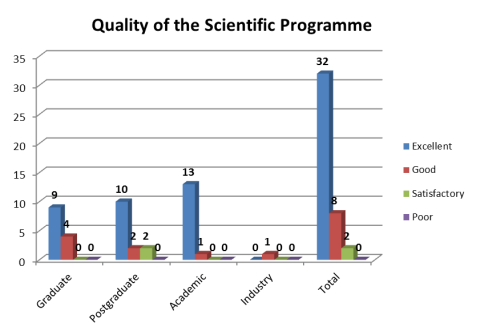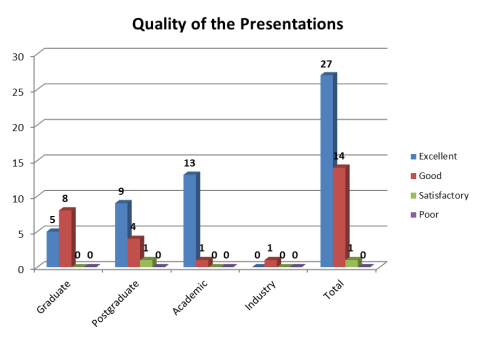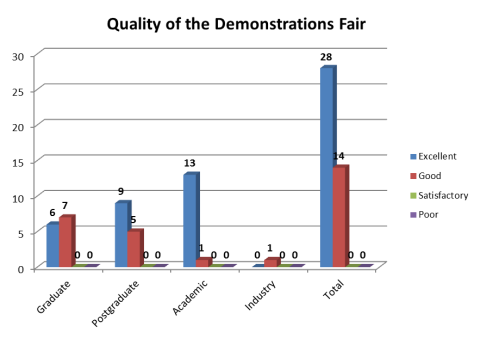The Laboratory of Crystallographic Studies (CSIC-UGR) organised the 3rd International School of Crystallization (ISC2012, http://www.iscgranada.org/) under the auspices of the International Union of Crystallography through the Crystal Growth and Characterization of Materials Commission. The event took place in the Centre of the beautiful City of Granada, an ideal place to promote close scientific and social interactions between the attendees.
The School was aimed for postgraduate/postdoctoral students as well as research scientists from industry and academia that deal routinely with crystallisation processes but seek fundamental knowledge on the crystallisation phenomena and the behaviour of crystallising solutions. Students from all over the world were invited to learn from top quality international speakers, to hear case study presentations, to watch practical hands-on demonstrations, to participate in round table discussions and to present their research results in the purposely dedicated poster sessions.
ISC2012 covered five days of lectures and practical demonstrations related to the field of the crystallization of foods, drugs and agrochemical compounds, including dedicated sessions on polymorphism and mineral growth.
Organising Committee
- Prof. Juan Manuel Garcia-Ruiz, Director of the School
- Dr. Jaime Gómez Morales, Director of the School
- Dr. Ulrich Griesser
- Dr. Alfonso Garcia Caballero
- Dr. Duane Choquesillo Lazarte
- Dr. José Manuel Delgado López
Attendance
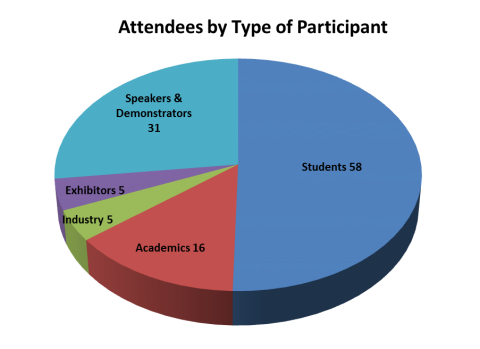
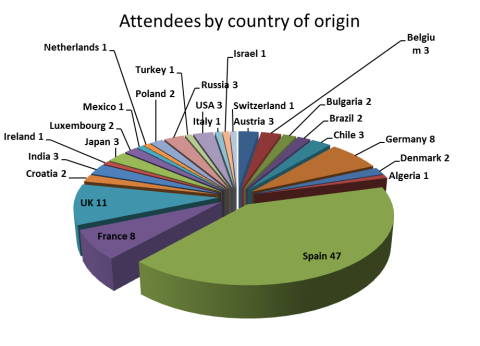
Figure 1. Top: Distribution of the type of participants in the ISC2012; Bottom: Number of participants in the ISC2012 by country of origin (25 different countries).
A considerable effort was made to provide financial support to as many students as possible. In fact, all of the 26 grant applications were accepted for funding (Figure 2). Remarkably, all the students coming from outside Spain (accounting for 88,9 % of all the granted students) received financial support to attend the School.
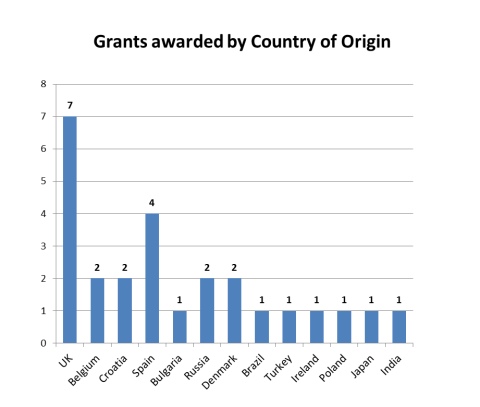
Figure 2. Country of origin of the students that received a grant to attend the ISC 2012.
Programme of the ISC2012
ISC2012 covered five days of lectures and practical demonstrations carried by 31 selected experts in the field of crystallisation.
Main topics of the ISC 2012
- Solution properties
- Nucleation: classical and non-classical approaches
- Crystal growth kinetics and mechanisms
- Crystallization routes
- Crystallization techniques
- Crystal morphology
- Mineral textures
- Polymorphism
- Hydrates and solvates
- Crystallization screening
- Industrial (mass) crystallization
- Crystallization and law
- Chirality
- Biomineralization
- Cocrystals
- Mineral growth
- Special and hot topics on crystallization
List of Speakers during ISC 2012
- Alain Baronnet, CINaM-CNRS, Marseille, France
- Alejandro Rodríguez-Navarro, University of Granada, Spain
- Alexander Van Driessche, CSIC-University of Granada, Spain
- Andrew Putnis, University of Münster, Germany
- Andrzej Katrusiak, Adam Mickiewicz University, Poland
- Christine Putnis, University of Münster, Germany
- Cristóbal Viedma, University Complutense Madrid, Spain
- Dierck Wieckhusen, Novartis Pharma, Switzerland
- Duane Choquesillo Lazarte, CSIC-University of Granada, Spain
- Gérard Coquerel, University of Rouen, France
- Giuseppe Falini, University of Bologna, Italy
- Helmut Cölfen, Max Planck Institute, Germany
- Jaime Gómez Morales, CSIC-University of Granada, Spain
- Jim de Yoreo, Lawrence Berkeley National Laboratory, USA
- Joel Bernstein, Ben Gurion University, Israel
- Jordi Benet, ICIQ, Tarragona, Spain
- José A. Gavira Gallardo, CSIC-University of Granada, Spain
- Juan Manuel García-Ruiz, CSIC-University of Granada, Spain
- K. Byrappa, University of Mysore, India
- Katsuo Tsukamoto, Sendai University, Japan
- Kevin Roberts, University of Leeds, UK
- Kiyotaka Sato, Hiroshima University, Japan
- Liane G. Benning, University of Leeds, UK
- Nair Rodriguez, University of Michigan, USA
- Ulrich Griesser, University of Insbruck, Austria
The first day of the School dealt with the fundamentals of crystallisation from solution encompassing a revision of phase diagrams, speciation, supersaturation and basic concepts on crystallizing solutions, nucleation theories, crystal growth kinetics and mechanisms, crystal morphology and analytical techniques for monitoring, controlling and scaling-up solution crystallization processes (Figure 3).

Figure 3. “Non-classical nucleation theory”, talk given by Prof. Helmut Coelfen.
The second day of the School focused on both classical and novel crystallisation techniques such as crystallisation in solution vs gel growth, crystallization from melts, supercritical crystallization, high pressure crystallization, the development of robust pharmaceutical crystallization processes and crystallization of lipids in colloidal dispersion techniques (Figure 4).
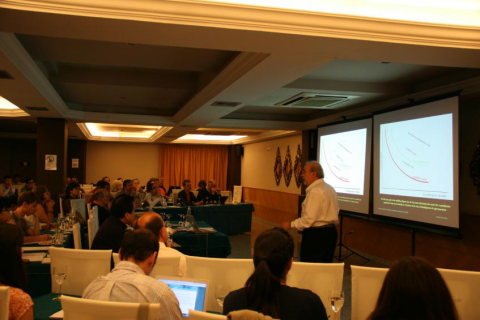
Figure 4. Lecture on solution crystal growth vs gel growth given by Prof. Juan Manuel Garcia-Ruiz.
The morning session of the third day was devoted to discuss the fundamentals of polymorphism, chiral crystallization, engineering cocrystal thermodynamic stability and eutectic points via micellar solubilization and ionization and legal aspects of polymorphs and solvates (Figure 5).
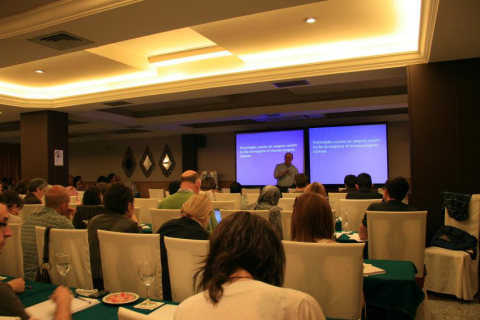
Figure 5. Prof. Joel Berstein explaining the fundamental of polymorphism.
Wednesday afternoon and Thursday were entirelydedicated to a ‘Demonstration Fair’, at which 22 specialists offered short (20-40 minutes) practical sessions periodically at scheduled times. Participants could choose what sessions they wanted to attend and in the order they wished, so that they selected their own learning programme “à la carte”. The ‘Demonstration Fair’ proved to be an excellent teaching tool as it provided students with plenty of opportunities to interact on a personal basis with tutors and to watch closely how to perform crystallisation experiments (Figure 6).
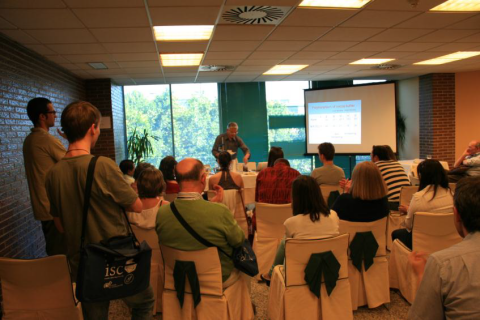
Figure 6. Prof. Kyo Sato showing the students the crystallization of lipids in chocolate during the Demonstration Fair.
The theme of the last day was mineral growth, including lectures on crystallization 4,6 billions years ago, nanoscale observations of mineral growth and dissolution, crystal growth of nanocrystalline apatites, bio-controlled crystal growth of the mollusk Shell, from nanoparticles to crystals: or how does a mineral form (Figure 7). The School was closed with the presentation of prizes offered by the International Union of Crystallography, IACT, CSIC and the Crystallisation Factory.
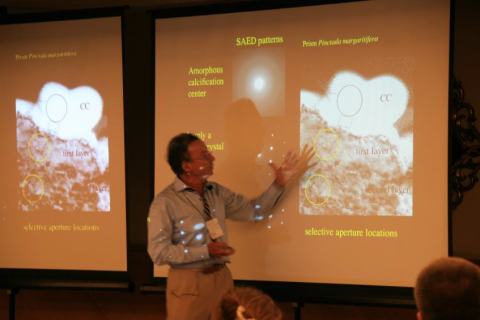
Figure 7. Prof. Alain Baronnet explaining nanoscale observations of mineral growth and dissolution.
Poster Sessions
The students made a great contribution to the success of the School presenting a total of 51 posters (Figure 8). Poster sessions rounded out each of the days and proved to be a very valuable time in order to discuss the scientific work. Student teams from Spain, Germany, Japan and Czech Republic were honoured by an international panel of lecturers, who decided to award 5 prizes for the best poster presentations (Table 1). These prizes consisted of two volumes of the International Tables of Crystallography offered by the IUCr, Bernhard Rupp’s book titled Biomolecular Crystallography: Principles, Practice, and Application to Structural Biology and two DVDs produced by CNRS and ARN titled “Diving into the heart of the molecules of life” offered by the Crystallisation Factory.
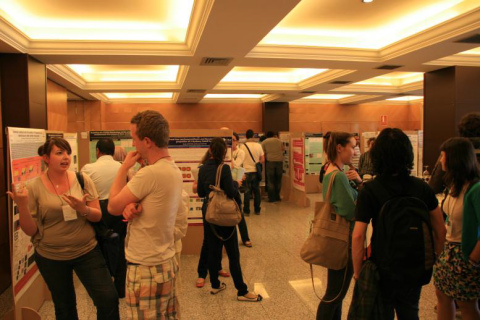
Figure 8. The poster sessions were very dynamic and successful.
Table 1. List of students awarded with a prize for their poster presentation.
|
Granada ISC2012 |
|||
|
Prize |
Beneficiary |
Affiliation |
Country |
|
IUCr Poster Prize |
Mr. Alí Saalemi |
Loughborough University |
UK |
|
IUCr Poster Prize |
Ms. Arantzazu |
Institut de Ciencia de |
Spain |
|
IACT Poster Prize |
Mr. Casper Ibsen |
Aarhus University |
Denmark |
|
CSIC Poster Prize |
Mr. René Steendam |
Univ. Nijmegen Radboud |
Netherlands |
|
Crystallisation |
Mr. Feyzim Hodzhaoglu |
Institute of Physical Chem., |
Bulgaria |
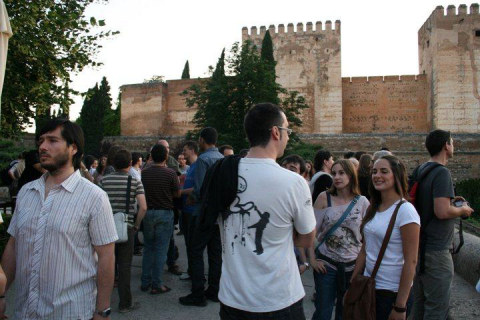
Figure 9. A group of students during their visit to the Alhambra.
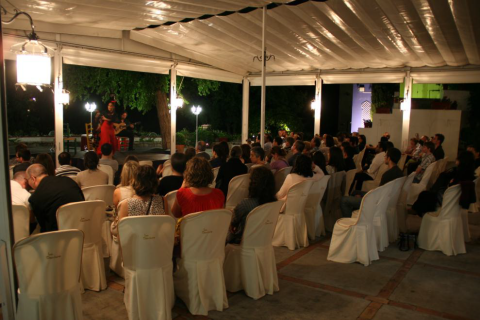
Figure 10. A picture of the Flamenco Party in the last day of the School.
Evaluation
